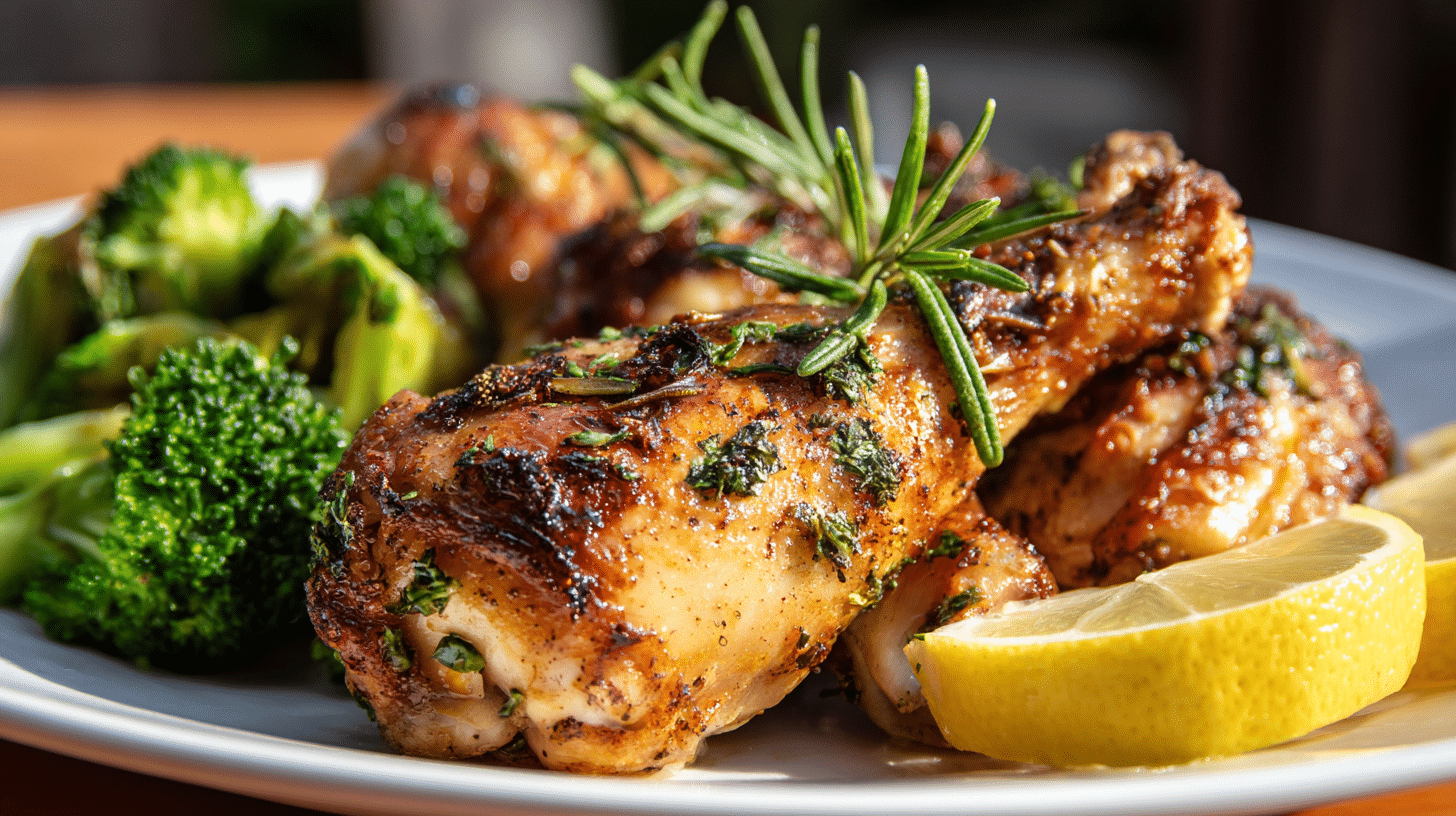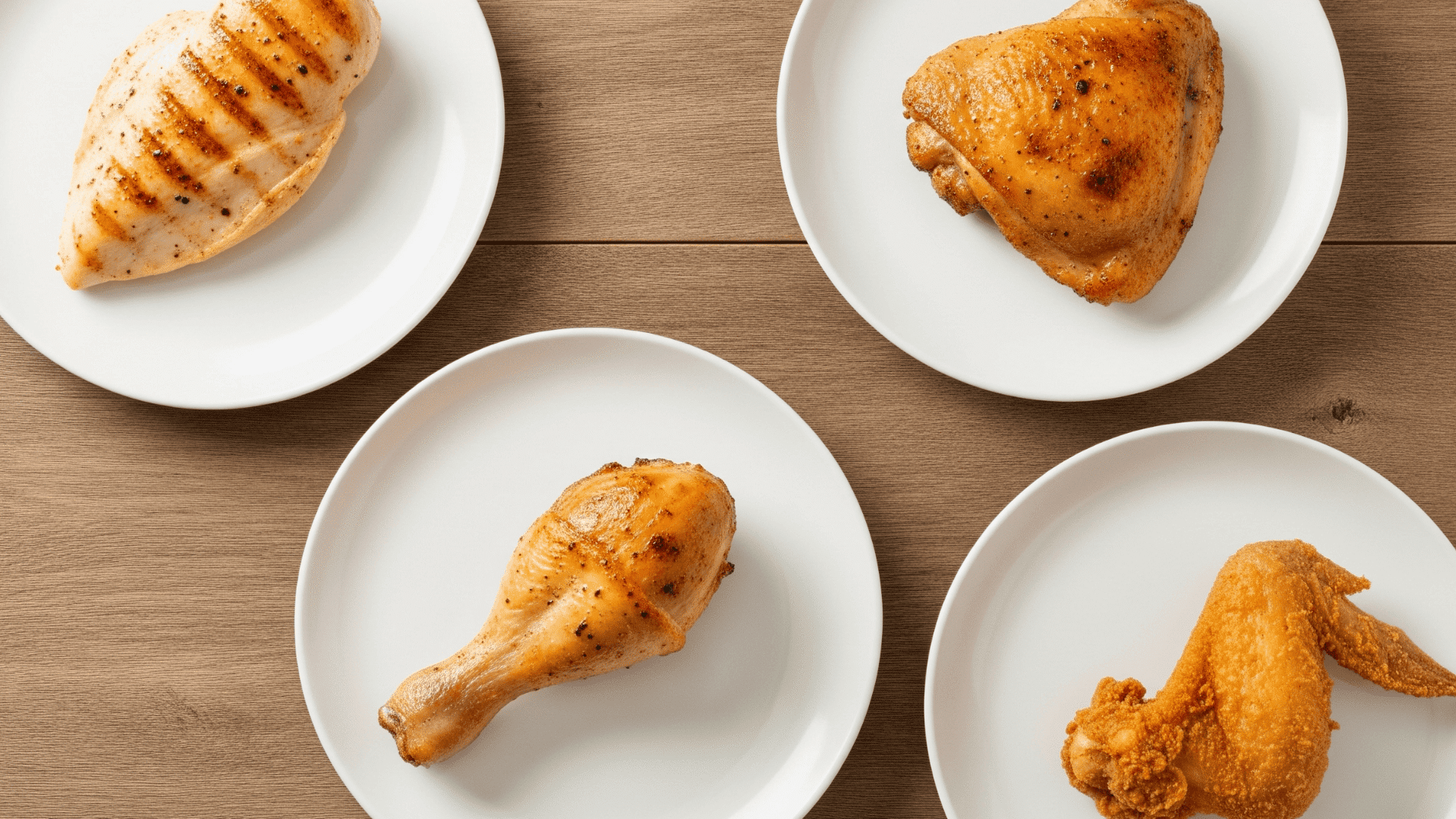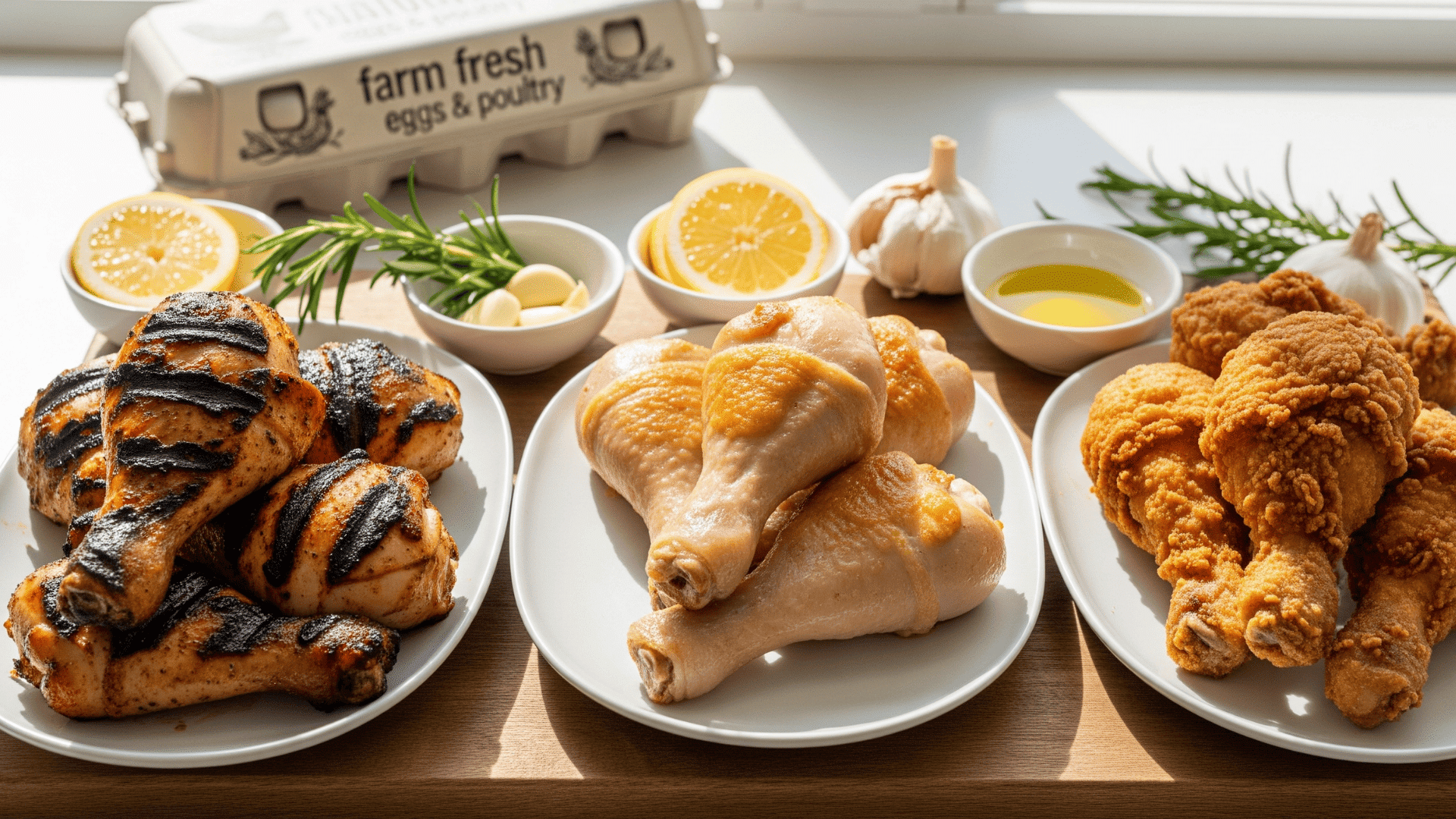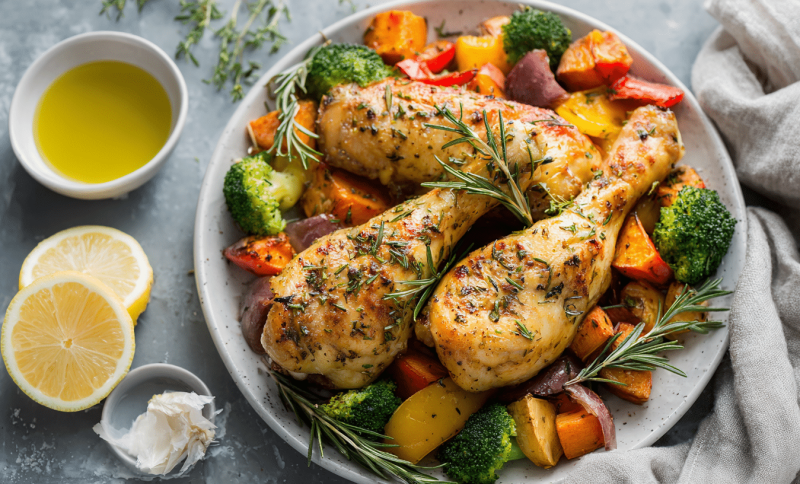Chicken is one of the most popular protein sources worldwide, and for good reason. It’s affordable, well-liked, and packed with nutrients your body needs to stay healthy.
While most people focus only on protein content, chicken legs offer so much more than just muscle-building power.
Your body needs a variety of nutrients to function properly. Protein helps build and repair muscles, but you also need vitamins for energy, minerals for strong bones, and healthy fats for hormone production.
Understanding the complete nutritional picture of chicken legs can help you make better food choices and plan more balanced meals.
How Much Protein is in Chicken Legs?
When it comes to protein content, chicken legs deliver impressive results. A 100-gram serving (about 3.5 ounces) of cooked skinless chicken drumstick provides 24 grams of protein – that’s almost half of what many adults need daily for muscle maintenance and repair.
This makes chicken legs an excellent choice for meeting your daily protein goals without having to eat massive portions.
You’ll also get 5.7 grams of fat that includes both saturated and unsaturated fats your body uses for energy and hormone production.
With 0 grams of carbohydrates, chicken legs are perfect for low-carb and keto diets, allowing you to focus your carb intake on vegetables and other nutrient-dense sources.
Calories in Chicken Legs and Other Nutritional Content

At 172 calories per serving, chicken legs offer a moderate calorie count that fits well into most meal plans without ruining your daily calorie goals. But the nutrition story doesn’t end with calories alone.
Chicken legs are packed with important vitamins and minerals that support your overall health and well-being.
They’re loaded with B vitamins, including niacin (B3), B6, and B12, which help convert food into energy and support proper brain function throughout the day.
Chicken legs also provide important minerals your body craves. You’ll get about 1.1 mg of iron to help carry oxygen throughout your body and prevent fatigue, plus around 2.1 mg of zinc supporting immune function and wound healing.
Additionally, chicken legs contain selenium, a powerful antioxidant that protects your cells from damage, and phosphorus that works with calcium to build strong bones and teeth.
How Do Chicken Legs Compare to Other Cuts?

Different chicken parts offer different nutritional profiles. Here’s how they stack up per 100 grams:
1. Chicken Breast (skinless)
| Protein | Fat | Calories | Iron | Zinc |
|---|---|---|---|---|
| 32g | 3.6g | 165 | 0.7mg | 1.0mg |
The undisputed protein champion, chicken breast, delivers the most muscle-building power with the fewest calories.
Its lean profile makes it perfect for weight loss and cutting diets, though it can be pricier and requires careful cooking to avoid dryness.
This cut is ideal when you want maximum protein benefit for your caloric investment.
2. Chicken Thighs (skinless)
| Protein | Fat | Calories | Iron | Zinc |
|---|---|---|---|---|
| 25g | 7.4g | 185 | 1.3mg | 2.5mg |
Thighs offer the best balance of flavor, nutrition, and affordability in the chicken family. With more iron and zinc than breast meat, they’re excellent for people with higher mineral needs, like athletes or growing teens.
The extra fat keeps the meat juicy and flavorful, making it nearly impossible to overcook.
3. Chicken Drumsticks (skinless)
| Protein | Fat | Calories | Iron | Zinc |
|---|---|---|---|---|
| 24g | 5.7g | 172 | 1.1mg | 2.1mg |
Drumsticks offer a solid protein content while being budget-friendly and kid-approved due to their easy-to-eat shape.
They offer more iron than breast meat, making them valuable for preventing fatigue and boosting energy levels. The moderate fat content strikes a nice balance between lean and flavorful.
4. Chicken Wings
| Protein | Fat | Calories | Iron | Zinc |
|---|---|---|---|---|
| 24g | 8.1g | 186 | 1.0mg | 1.8mg |
Wings pack decent protein but come with the highest fat content, making them more of an occasional treat than a regular protein staple.
They’re perfect for social eating and game day, but the small meat-to-bone ratio means you’ll need several wings to match the protein of one drumstick. Best enjoyed in moderation due to their higher calorie density.
Which Chicken Cut Fits Your Health Goals?
Your nutritional needs should guide your chicken choices:
- For Weight Management: chicken breast offers the most protein with fewer calories and less fat. However, don’t completely avoid dark meat – the extra minerals and B vitamins are valuable, and the fat helps you absorb fat-soluble vitamins.
- For Muscle Building: While breast meat provides more protein per serving, chicken legs offer additional calories and nutrients that support recovery. The extra fat also helps with hormone production, which is important for muscle growth.
- For Iron Needs: If you’re prone to low iron (common in women and vegetarians who occasionally eat meat), chicken legs provide more iron than breast meat. This can help prevent fatigue and improve energy levels.
- For Budget-Conscious Eating: Dark meat typically costs less while still providing excellent nutrition. You get more value for your nutritional investment with legs and thighs.
A typical drumstick with bone weighs about 150 grams, but you’ll get roughly 75-100 grams of actual meat after removing the bone.
What Affects the Nutrition in Your Chicken?

Several factors can change the nutrients in your chicken:
- Cooking Method Matters: Grilling, baking, and roasting preserve most nutrients while allowing excess fat to drain away. Frying can reduce some B vitamins due to high heat and may add unwanted calories from oil.
- Skin On or Off: Keeping the skin nearly doubles the fat content and adds about 50-60 calories per drumstick. However, skin also contains some nutrients and can help prevent the meat from drying out.
- Source Quality: Free-range chickens often have higher omega-3 fatty acid content compared to conventionally raised birds. Fresh chicken typically retains more vitamins than frozen chicken that’s been stored for extended periods.
- Smart Preparation: Marinating chicken in acidic ingredients (like lemon juice or vinegar) can actually help your body absorb more iron and zinc from the meat.
Getting the Most Nutrition From Your Chicken Legs
Getting the most nutrition from chicken legs starts with smart cooking methods like baking at 375-400°F, grilling over medium heat, or slow roasting to preserve B vitamins.
Season generously with nutrient-rich herbs like rosemary, thyme, and garlic, which add antioxidants that protect your cells from damage.
Pair your chicken with vitamin C-rich vegetables like bell peppers or broccoli to boost iron absorption, and include healthy fats like olive oil or avocado to help your body absorb vitamins A, D, E, and K.
Always cook to 165°F internal temperature using a reliable meat thermometer – this ensures safety without destroying nutrients through overcooking.
Keep the bone in during cooking to retain moisture and add trace minerals.
The Bottom Line on Chicken Leg Nutrition
Chicken legs deliver impressive nutritional value with 24 grams of protein per 100-gram serving, plus B vitamins for energy, iron for healthy blood, and zinc for immune support.
While chicken breast contains more protein, drumsticks offer more iron and zinc, along with healthy fats that help vitamin absorption and hormone production.
The best choice depends on your goals; whether building muscle, managing weight, or eating nutritiously on a budget, chicken legs deserve consideration.
They prove healthy eating doesn’t have to be expensive or bland. Next grocery trip, give chicken legs a chance; your body and wallet will benefit.
What’s your favorite way to prepare chicken legs? Share your go-to recipes and cooking tips in the comments below!













